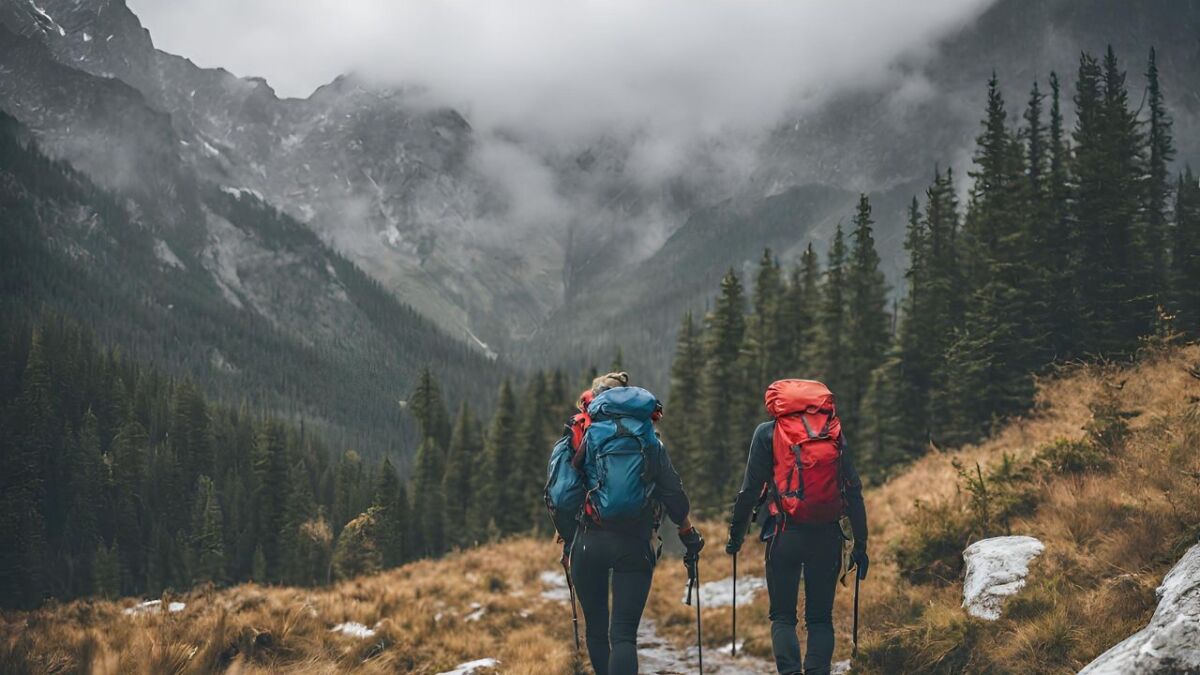
Hiking in any weather: How does you dress when hiking in nature?
👉 The key facts from this guide
- You should avoid wearing cotton clothing while hiking and instead wear breathable functional clothing.
- Use the onion layer principle with different layers of clothing to adapt to the weather.
- Water-repellent jackets and pants as well as hiking shoes with a good fit and profile sole are important.
- Useful accessories include sunglasses, hat, hiking poles, and a first aid kit.
- When buying, pay attention to high-quality, sustainably produced outdoor brands.
- With the right equipment and clothing, you can enjoy hiking in any weather.
Hiking in wind and weather can be quite a challenge, isn't it?
Especially when it gets cold and wet, the right clothing is essential to still have a great day in nature.
But what is the best thing to wear when hiking, when it's raining or even snowing?
And how do you layer your clothing so that you neither sweat nor freeze?
Don't worry, I'll now tell you how to dress weatherproof for hiking.
With the right materials and a few clever tricks, you can stay warm, dry, and in good spirits on the go.
So, get dressed smartly and head outside - the hiking trail is calling.
Short overview: What is the best hiking clothing?
The perfect hiking clothing consists of functional, breathable clothing and sturdy and comfortable hiking shoes. Important are wind and water-repellent jackets, simple layering systems for putting on and taking off, as well as good socks for blister protection.
But what does all this mean? What is a layering system, also known as the onion principle?
Let's dive deeper now and in the end, you will know what hiking clothing the pros wear.
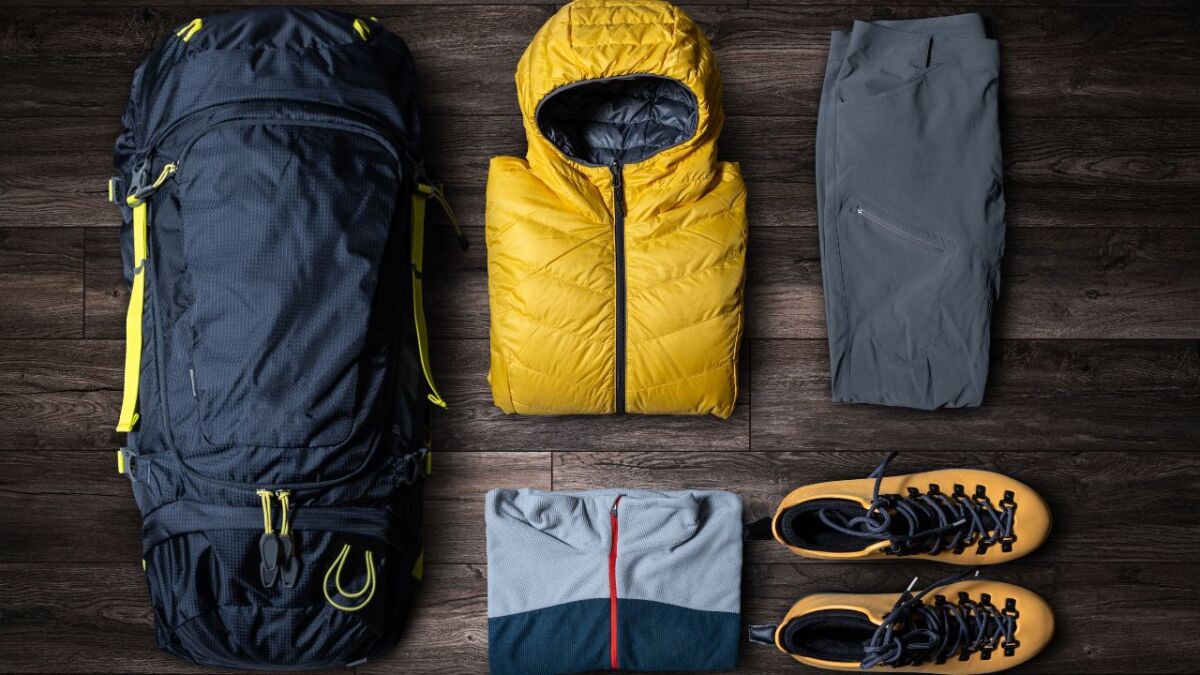
When hiking in nature, the right clothing is crucial
The fact is: You should choose your clothing carefully to be comfortable and protected in any weather.
You should carefully consider your choice of hiking clothing, as it has an impact on both comfort and functionality while hiking. Ideally, the different layers of hiking clothing should work together perfectly.
I still remember my first long hike years ago.
Do you know what happened?
I was sweating so much that I had to strip down to my t-shirt, even though it was only 13 degrees outside. And guess what my t-shirt was made of? Yes, you guessed it: cotton.
Nothing dries as poorly as cotton and I didn't have a spare shirt with me. I took a break and started freezing after a few minutes. The combination of a cotton shirt and a cotton sweater was not good at all.

So here's my first tip:
👉 Hiking clothing made of cotton should be avoided as it absorbs moisture and takes a long time to dry.
The base layer is worn directly on the skin and should be made of lightweight, breathable and quick-drying materials such as merino wool or synthetic fabrics.
Why is merino wool odor-resistant?
Want to smell good on your next outdoor trip? Merino wool is the key. It is naturally odor-resistant and great for your hiking clothing.
Keratin is your friend: Merino wool contains a lot of keratin. This is the same protein you find in your hair and nails. It captures bacteria and renders them harmless.
Water-repellent: The fibers of merino wool are water-repellent. Less moisture means fewer bacteria and less odor. In short, with merino wool, you stay fresh. Perfect for long trips in nature!
The mid-layer provides insulation and can consist of fleece jackets or pullovers.
Hiking jackets should be breathable, water-repellent, and equipped with pockets. It is also recommended to have a waterproof and breathable hiking pants. Additionally, you should pay attention to a good fit of the hiking shoes and hiking socks.
When hiking, you should apply the onion principle, where multiple thin layers are worn to adapt to the weather. It is important that hiking clothing is lightweight, breathable, and functional.
And I have noticed that there are other important clothing items for hikes. These include sunglasses, hat, hiking poles, or gloves.
Choosing the right hiking shoes: durable, water-resistant, and comfortable
Let's start by getting into the details of your feet, as they carry you all day while hiking.
Imagine these are two of your best friends and your task is to nurture and care for them. They require your full attention.
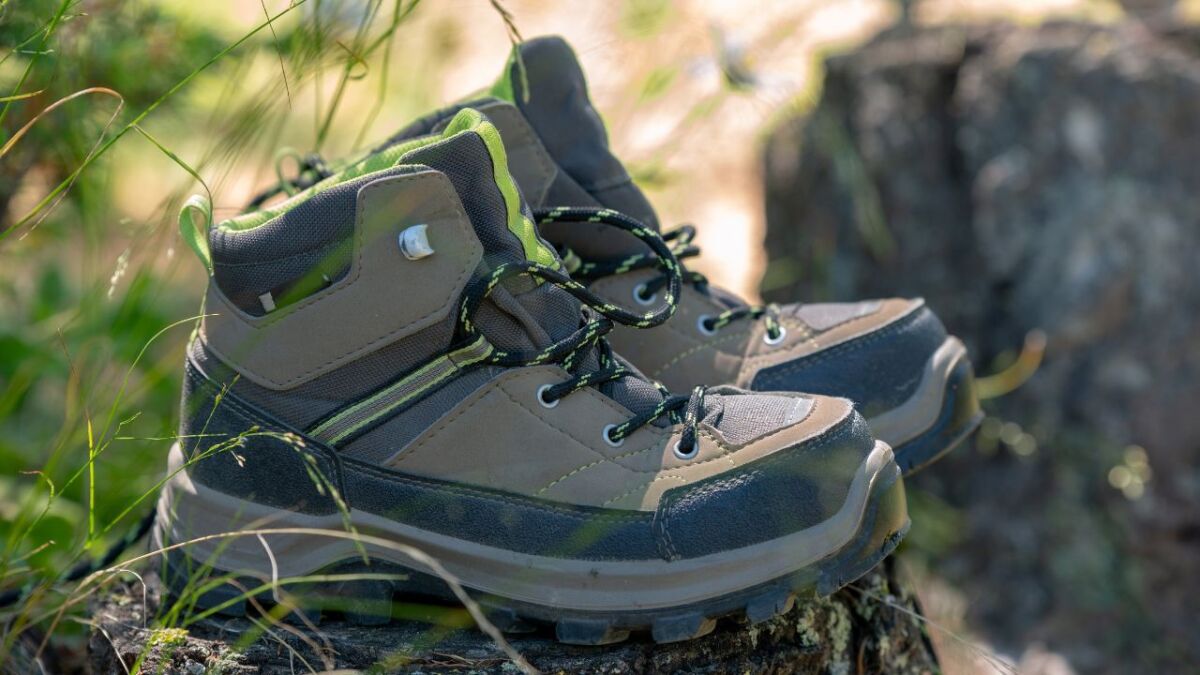
Have you ever been out with completely soaked shoes? Then you know how uncomfortable that can be.
From my many years of experience as a passionate hiker, I can say:
Without good hiking shoes with slip-resistant soles, one quickly risks painful blisters and sprains.
The choice of the right hiking shoes is crucial for a comfortable wearing comfort and protection against the elements.
When hiking, it is important that the shoes be durable, water-resistant, and comfortable
In addition, they should provide good support for the foot and protect against injuries (so leave the barefoot shoes at home this time).
To find the right hiking shoes, you should consider the following aspects:
- The shoes should have a good fit and be made of durable materials such as leather or synthetic fabrics.
- Hiking boots are suitable for demanding hikes and trekking tours, while lightweight hiking shoes may be sufficient for easy hikes.
- Hiking shoes should be water-resistant to keep your feet dry, even in wet or rainy weather.
- Comfort is also important. Make sure the shoes have good cushioning and a non-slip sole.
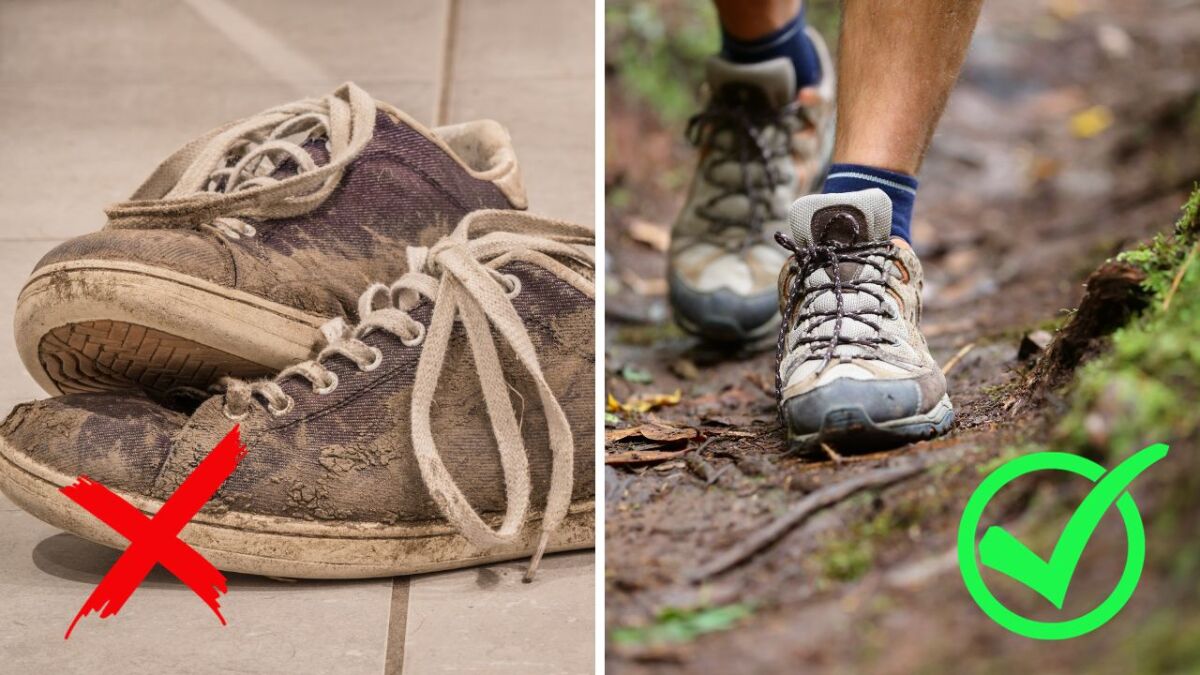
The right hiking socks: breathable and well-fitting
What else belongs to the feet besides shoes? Of course, good socks.
The right hiking socks have always been important to me to prevent blistering and friction.
Because once you have walked a few blisters, you will probably only be able to cover the next kilometers in pain.
I speak from experience: blisters can ruin your entire day of hiking. Don't take them lightly.
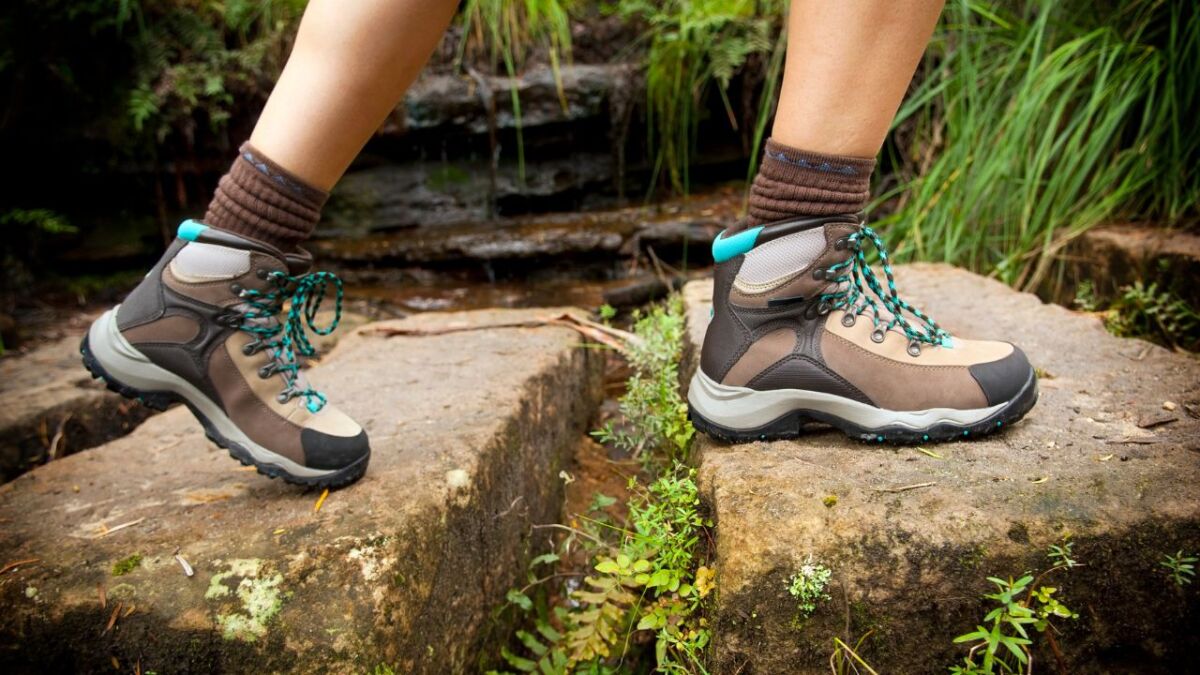
Your hiking socks should be made of breathable and moisture-wicking materials such as merino wool or synthetic fabrics (Read here to find out what's better).
You should sit well and not have any wrinkles to avoid uncomfortable pressure points. Here, too, it is recommended to pay attention to a good fit and quality.
| Material | Advantages |
|---|---|
| Merino wool | Breathable, moisture-wicking, odor-resistant |
| Synthetic fabrics | Breathable, moisture-wicking, quick-drying |
| Cotton | Not recommended as it absorbs moisture and takes a long time to dry |
By choosing the right hiking shoes and hiking socks, you will give your hikes a pleasant and comfortable start.
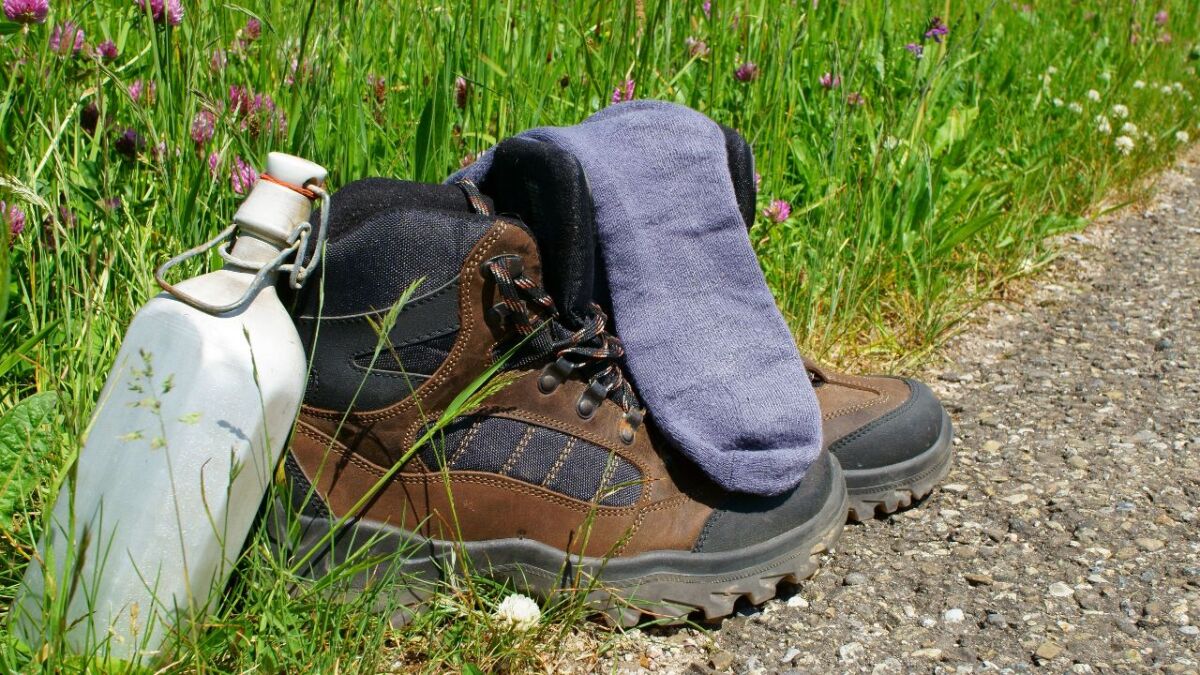
The importance of optimal hiking clothing
Let's move on to hiking clothing.
You can probably already imagine that the right hiking clothing plays a crucial role.
Your goal: You want to wick moisture away from the skin while also allowing air to reach the skin - thus ensuring pleasant breathability.
When hiking, you are exposed to different weather conditions and physical exertion, so I advise you to adapt your clothing to your needs.
👉 To effectively wick away moisture, as a hiker, you should avoid clothing made of cotton.
The difficulty with cotton: it absorbs moisture, but dries slowly.
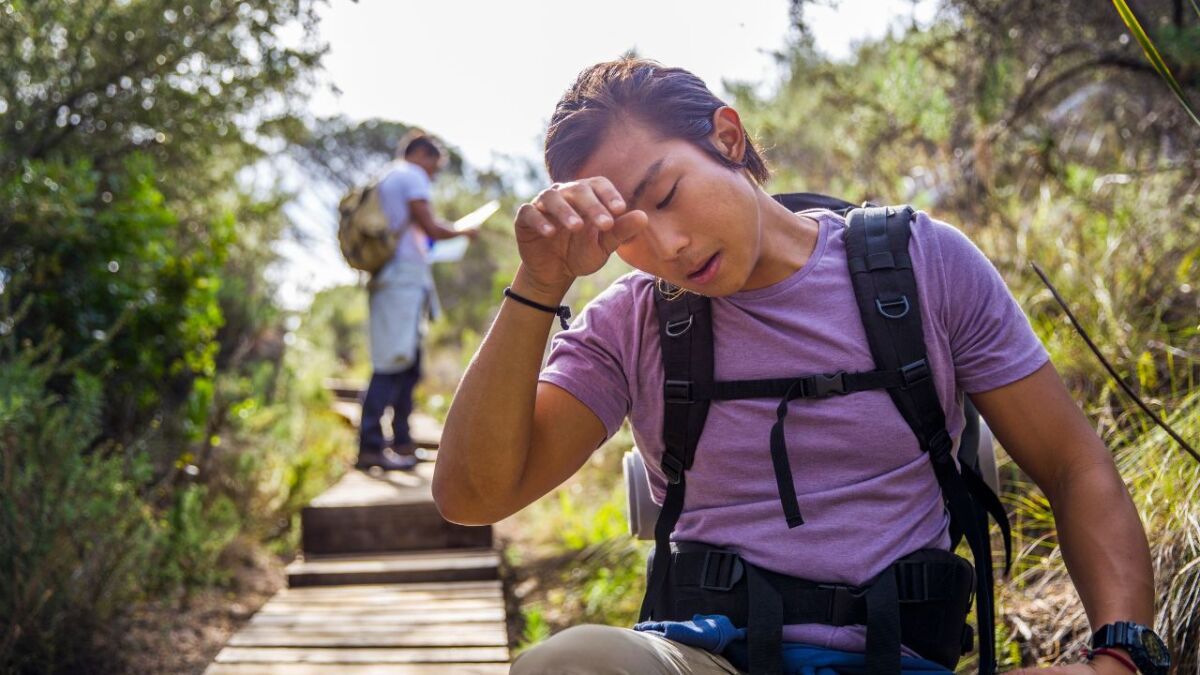
Instead, lightweight, breathable, and quick-drying materials such as merino wool or synthetic fabrics are ideal for the base layer, which is worn directly against the skin.
These materials enable efficient sweat evaporation and provide pleasant breathability.
In addition, the choice of mid-layer, which is responsible for insulation, plays an important role. Fleece jackets or pullovers are a suitable option here, as they retain warmth while also being breathable.
Hiking jackets should also be breathable and have a water-repellent coating to protect against moisture and light rain. Additionally, they should be equipped with enough pockets so that you have important utensils at hand.
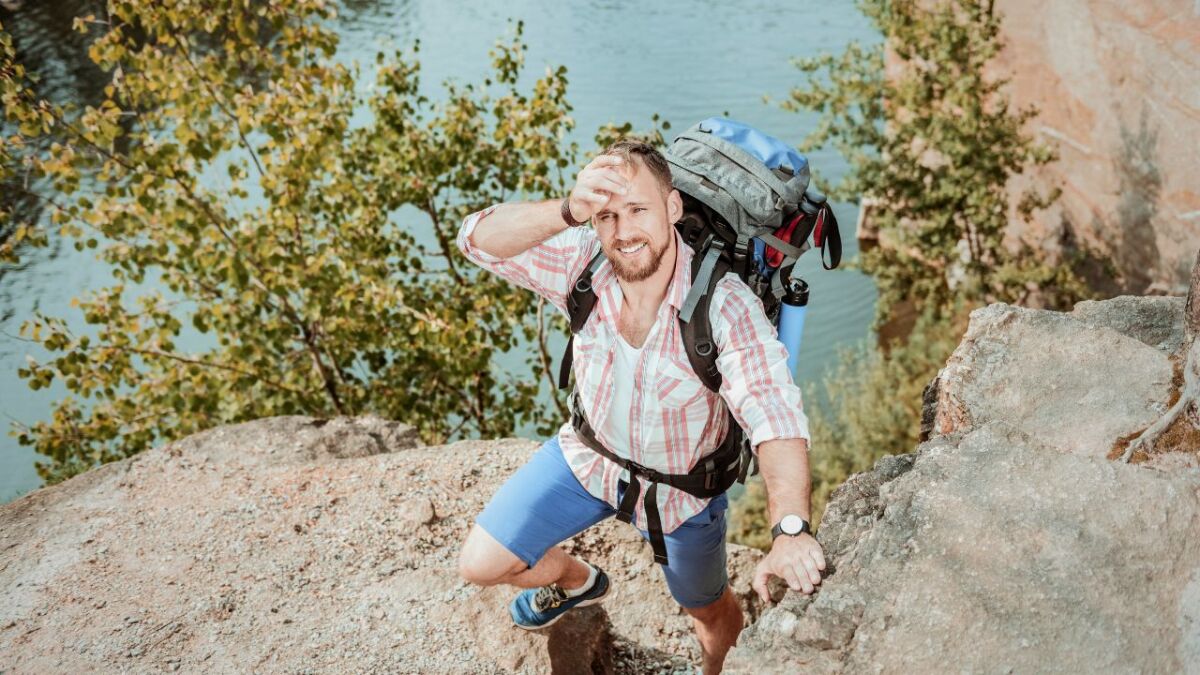
Important points to consider when choosing to hike clothing:
- Lightweight, breathable, and quick-drying materials for the base layer
- Fleece jackets or pullovers for the insulation layer
- Water-repellent and breathable hiking jackets with plenty of pockets
- Waterproof and breathable hiking pants
- Proper fit with hiking shoes and hiking socks
During hikes, accessories such as sunglasses, hat, and gloves should not be forgotten to protect against sun, wind, and cold.
The onion principle, where multiple thin layers are worn, allows hikers to adapt to the weather and regulate body temperature (Find more information here on bergzeit.de).
| Base-Layer | Mid-Layer | Outer-Layer | |
|---|---|---|---|
| Texture | Lightweight, breathable, and quick-drying materials | Insulating properties | Breathable and water-repellent hiking jackets, enough pockets for important items |
| Materials | Merino wool or synthetic fabrics | Fleece jackets or pullovers | Synthetic fabrics |
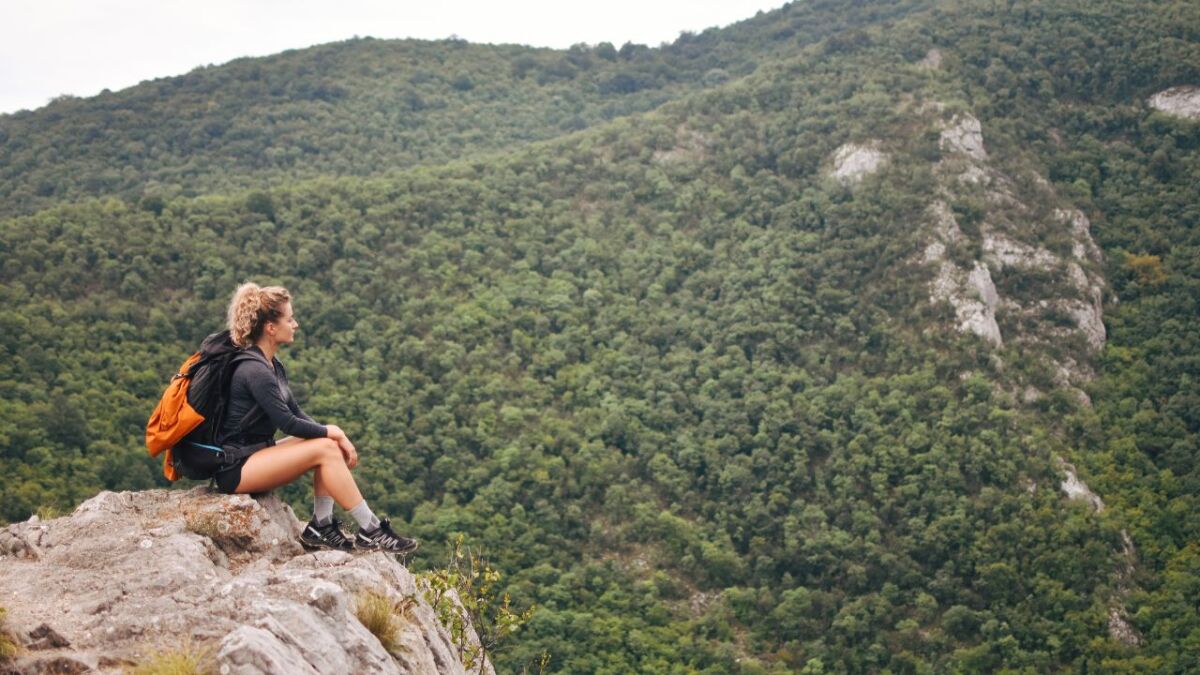
Cotton versus synthetic high-tech fibers in outdoor and hiking clothing
Some still swear by good old cotton, while others predict the total triumph of performance fibers.
And I understand both sides - let's weigh the facts objectively.
Cotton has the advantage of feeling soft and comfortable on the skin. However, pure cotton tends to retain moisture for a long time, which can be uncomfortable, especially during intense activity. The unpleasant smell of sweaty cotton clothing is also a problem.
Here synthetic fabrics like polyester or elastane clearly have advantages: They transport sweat away from the skin and dry quickly. In addition, they are usually more elastic than cotton and chafe less. However, polyester "rustles" too much for some ears.
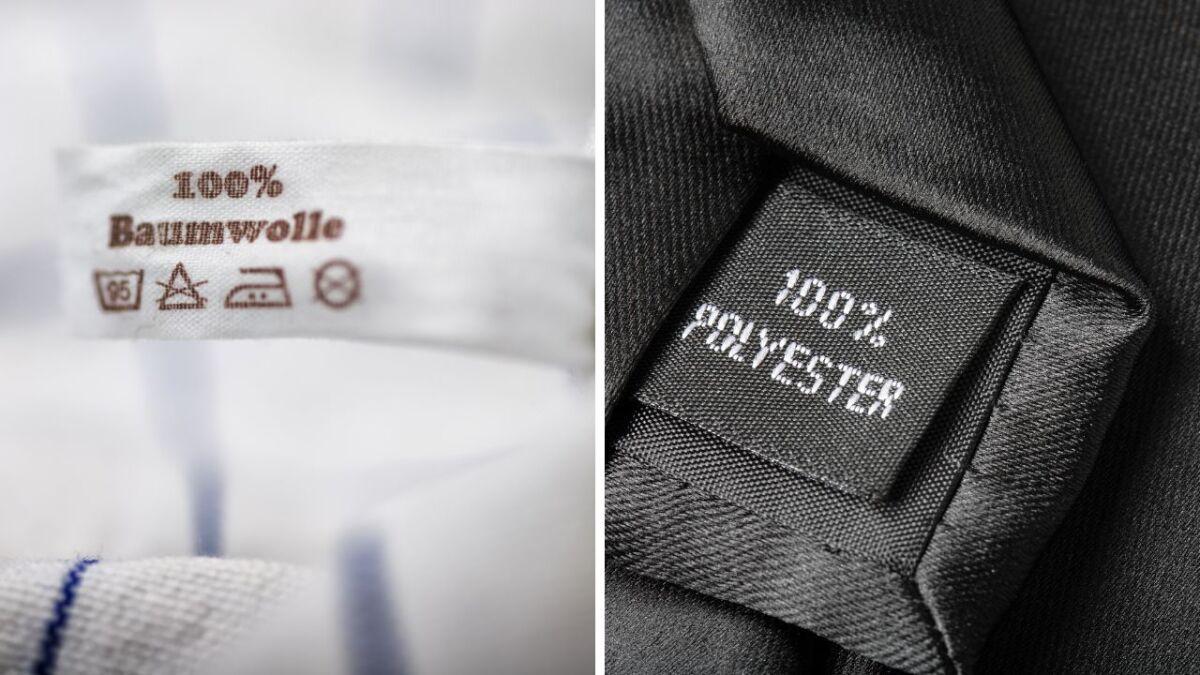
My tip as an experienced hiker: Combine the best of both worlds.
Wear cotton only directly on the skin, where comfort matters. The outer layers made of functional synthetic materials ensure moisture transport. This way, you can enjoy optimal comfort.
Here is a comparative overview table of cotton vs. synthetic materials in hiking clothing:
| Criterion | Cotton | Synthetic performance fibers |
|---|---|---|
| Moisture management | Absorbs moisture and releases it slowly | Transports moisture quickly to the outside and dries fast |
| Comfort | Pleasantly soft on the skin, but can feel clammy quickly | Often not as soft as cotton, but dries quickly |
| Odor development | Tends to develop musty odors with heavy sweating | Odor-resistant due to fast moisture transport |
| Tensile strength | Good strength with good quality | Usually higher tensile strength |
| Care | Machine wash usually no problem | Synthetic fibers tend to pill, needs gentle washing |
| Price | Often cheaper than high-tech fibers depending on quality | Higher price for innovative performance fibers |
| Sustainability | Natural product, possible from organic farming | Artificial product made from petroleum, partly recyclable |
Conclusion: An ideal combination of natural and functional fibers in different layers of clothing is recommended.
What is your opinion regarding natural fibers vs. performance fibers? Write it down in the comments below.
The different layers of hiking clothing
I have already touched on the different layers, but I consider them to be so important that I want to delve deeper with you here.
Because the fact is: The proper layering of your hiking clothing is essential to protect yourself from wind, rain, and cold weather in any conditions.
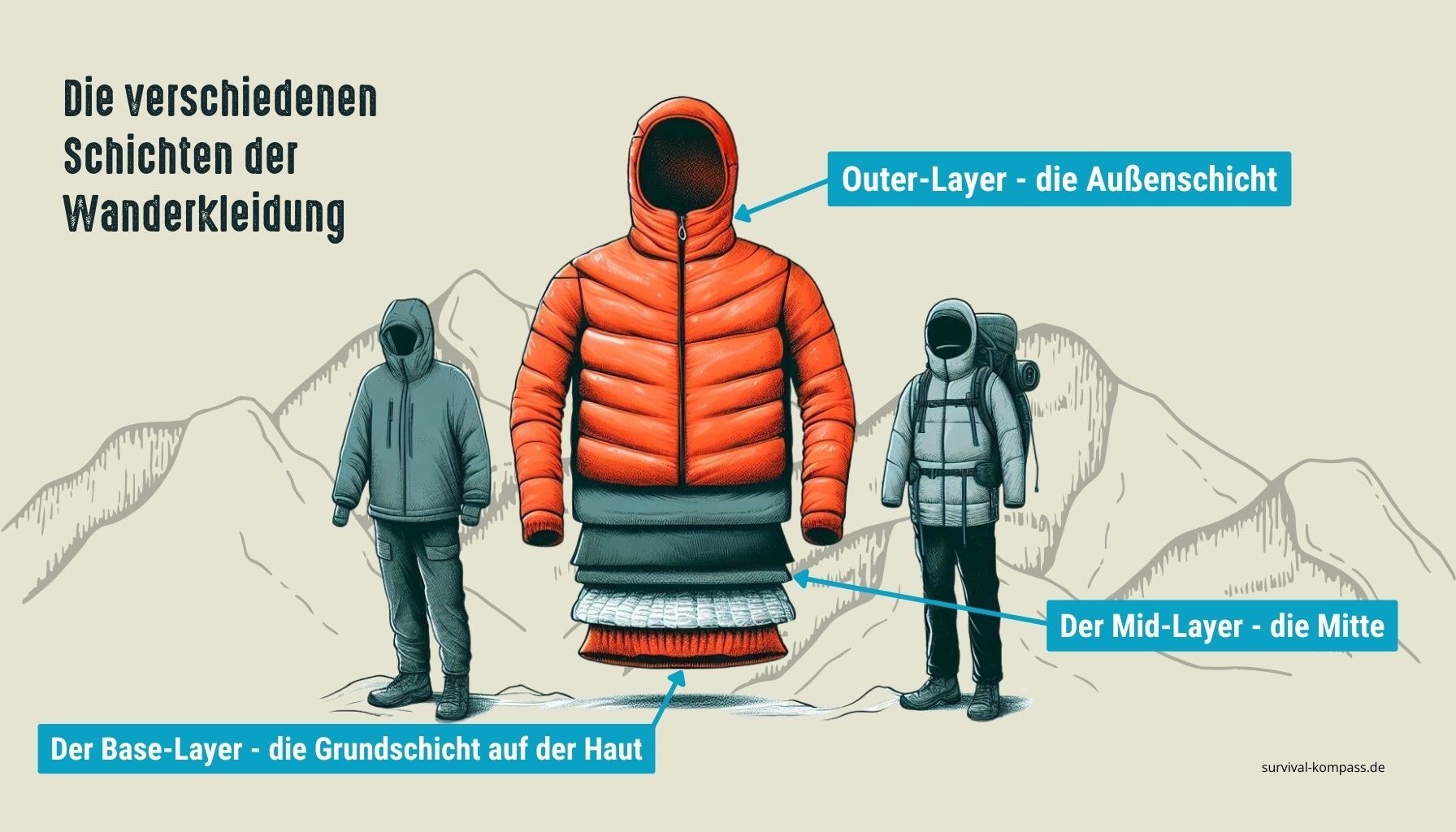
When hiking, you should apply the onion principle, which means wearing multiple thin layers to adapt to the weather.
Each layer fulfills a specific function and contributes to overall comfort.
Here is an overview of the three different layers:
1. The Base Layer - the base layer on the skin
The base layer is worn directly against the skin and its purpose is to wick moisture away from the skin and keep the body dry.
Lightweight, breathable, and quick-drying materials such as merino wool or synthetic fabrics are best suited for this.
These materials regulate body temperature and provide a comfortable feeling while hiking.
In addition, they transport moisture well and prevent unpleasant sweat odor (especially pleasant when sitting in a tight mountain hut).
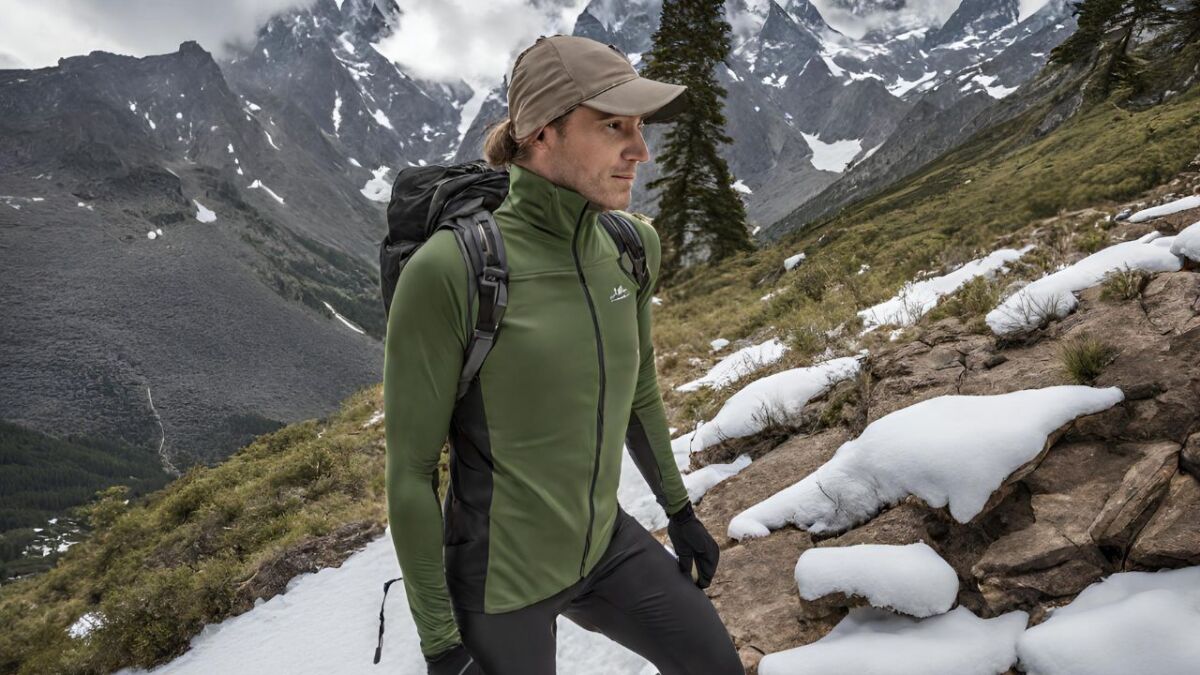
What about the underwear?
Have you ever been on a challenging mountain hike wearing cotton underwear?
Then maybe you know this? You are completely wet and sweaty - your underwear sticks uncomfortably to your body.
But don't worry, there is a solution for that!
To stay dry and odor-free on a multi-day hike, special performance underwear made of materials like merino wool or synthetic fibers is ideal.
This transports moisture quickly to the outside and dries quickly, so you stay fresh all day long.
For Men: Merino shorts are a great choice for hot summer days, as unlike cotton shorts, they stay comfortable even when wet and don't smell musty. When buying, pay attention to a good fit, as hiking shorts should fit snugly to avoid chafing. I do not recommend long and airy shorts.
For women: Functional sports bras and merino underwear are also very practical for female hikers. They transport moisture away from the body and dry quickly. It is important that the sports bra provides good support and does not chafe. Comfortable seamless merino underwear is ideal for multi-day hikes.
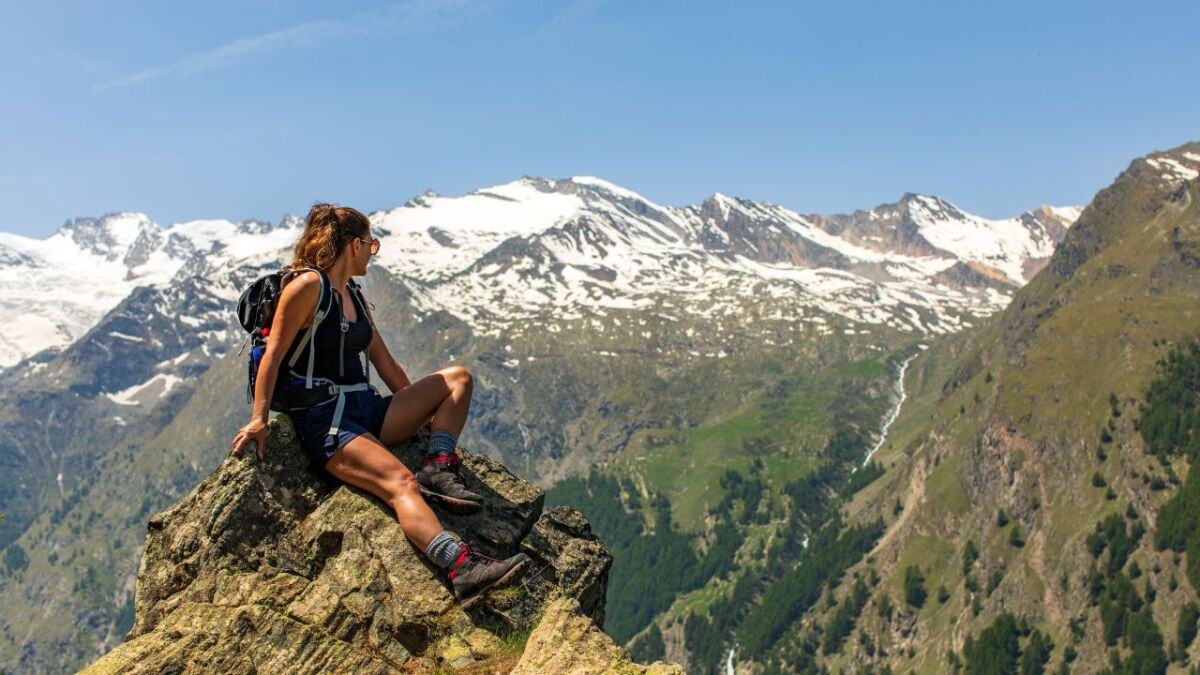
2. The Mid-Layer - the Middle
The mid-layer provides insulation and keeps your body warm. Here I use fleece jackets or pullovers.
These insulating layers help you to retain body heat and protect you from the cold. They are lightweight, breathable, and provide good freedom of movement.
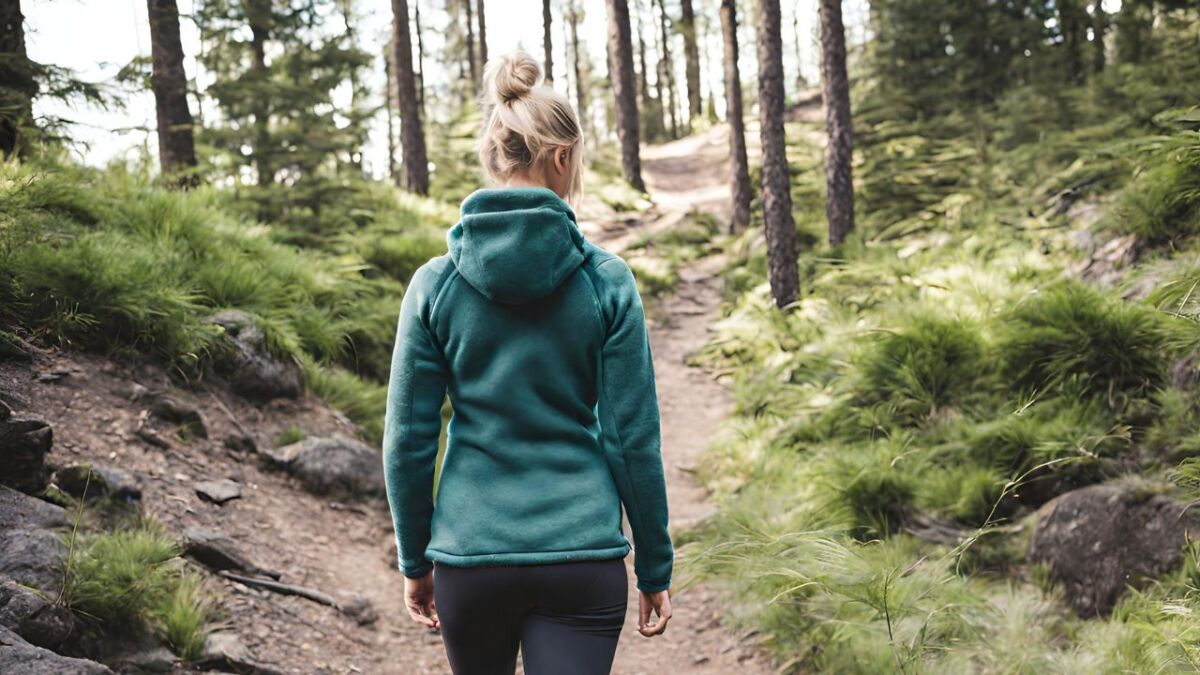
3. Outer-Layer - the outer layer
The outer layer, also known as the outer shell, is your barrier against wind, rain, or even snow. A good hiking jacket should be breathable, water-resistant, and equipped with plenty of pockets to keep important items such as maps, pocket knives (find the best list here), or snacks within reach.
I also recommend a waterproof and breathable hiking pants to keep your legs dry. If you prefer to wear lightweight pants, make sure to bring at least one pair of rain pants to wear over them.
The goal of the outer layer: It should be lightweight and provide enough freedom of movement to allow for comfortable hiking.
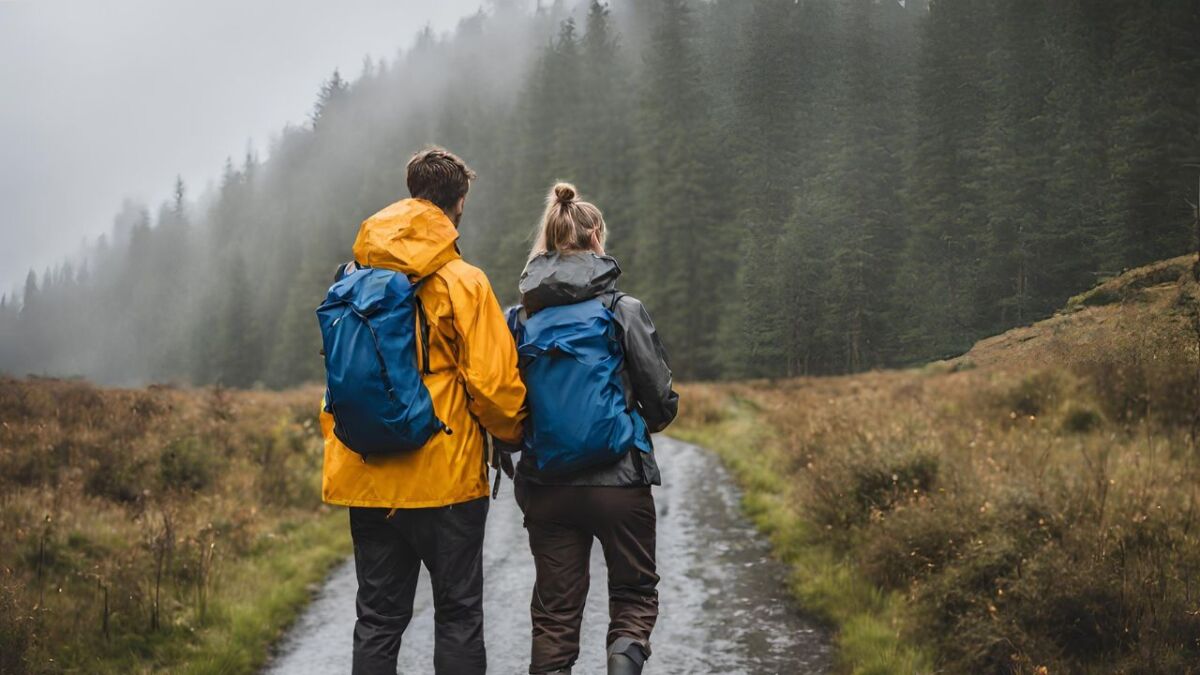
Additional Equipment and Important Accessories for Hiking
Aside from the layers of hiking clothing, there are also some additional pieces of equipment that have been useful to me on many hikes.
Accessories like caps, headbands, and hiking poles are important companions on every hiking tour with me.
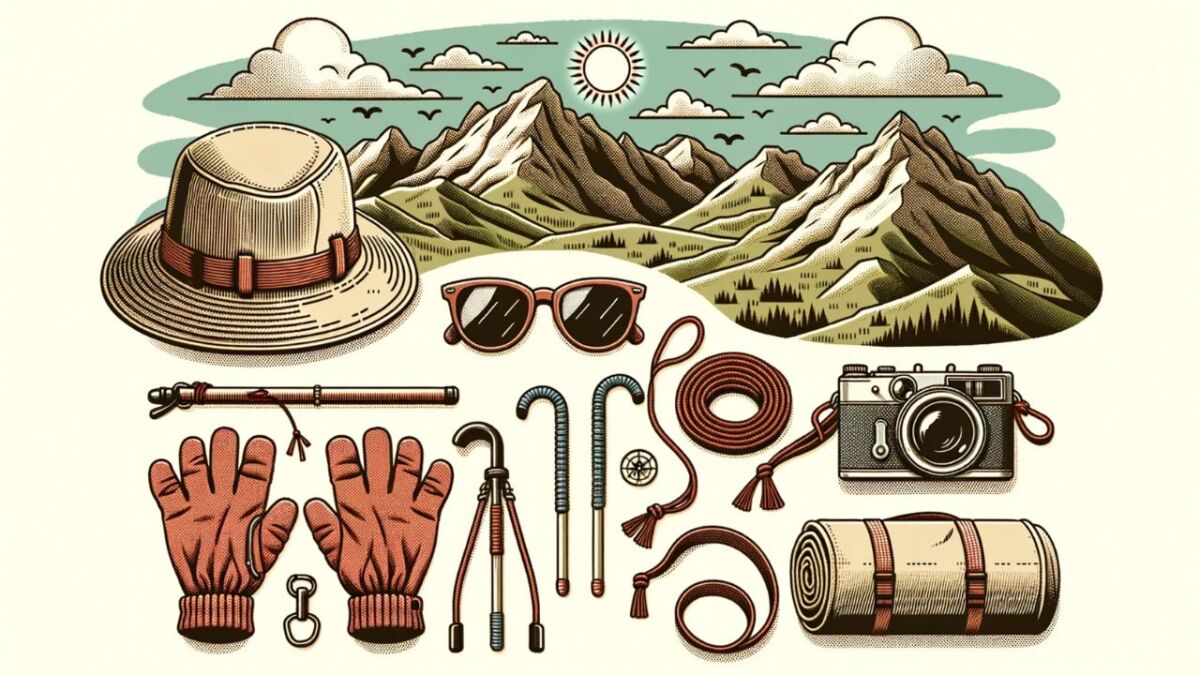
1. Sunglasses
A pair of sunglasses protects your eyes from bright sunlight and UV rays. Especially during the sun-intensive months or in places with high UV exposure, such as in the mountains.
Furthermore, wearing sunglasses can relax your eyes and prevent fatigue and headaches often caused by the glare of sunlight.
It is advisable to choose sunglasses that provide effective UV protection and enough shade to protect your eyes.
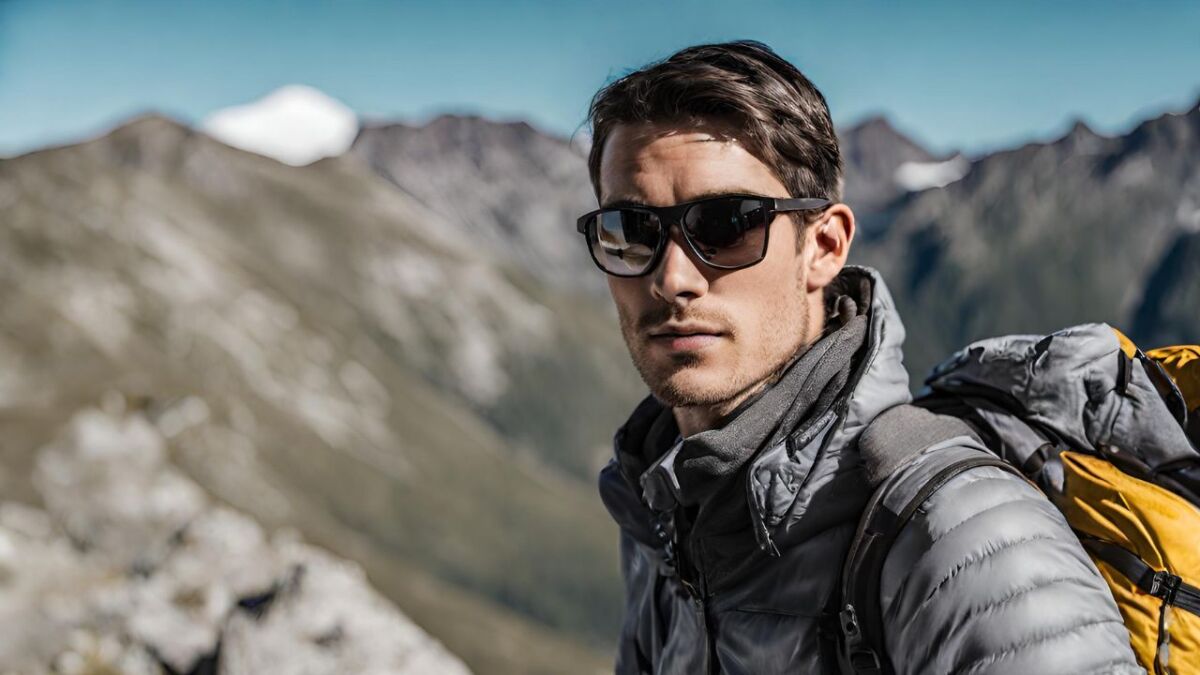
2. Hat or Cap
A hat keeps your head warm and protects against cooling down. It also protects against direct sunlight and helps to avoid a sunstroke. I always have one in my backpack.
For me, a hat is an essential accessory, whether for hiking in the mountains, hiking in the forest, or just for a walk on a cool day.
Hats and caps are available in many styles, colors, and materials, so you can definitely find the right model for your taste and weather conditions.

3. Gloves
Gloves are essential in winter to protect your hands from the cold. They are an important accessory that is crucial during the cold winter months to keep your hands warm and protected.
They not only serve as a physical barrier against the icy cold, but can also protect our skin from dryness and irritations that are often caused by harsh weather conditions.

4. Hiking Poles / Trekking Poles
Hiking poles / trekking poles support you when going up and down in terrain (here is my guide on that).
You are a valuable support when hiking, especially in difficult terrain or on longer hikes. You relieve your joints and support balance.
Hiking poles should be lightweight yet sturdy to enable comfortable hiking. Some models can also be adjusted in height and can be adapted to different body sizes.
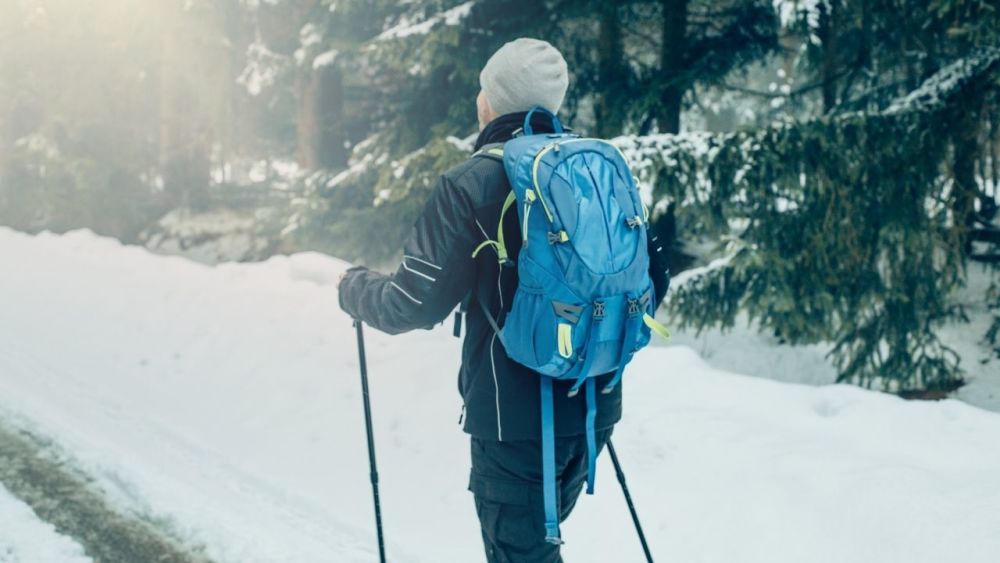
5. Headband
A headband can serve to keep sweat away from the eyes and protect the ears from wind. It should be made of breathable materials and dry quickly to ensure a comfortable wearing experience.
My tip: When choosing, pay attention to a good fit, high-quality materials, and good workmanship. With the right accessories, you are well-equipped to enjoy nature in any weather.
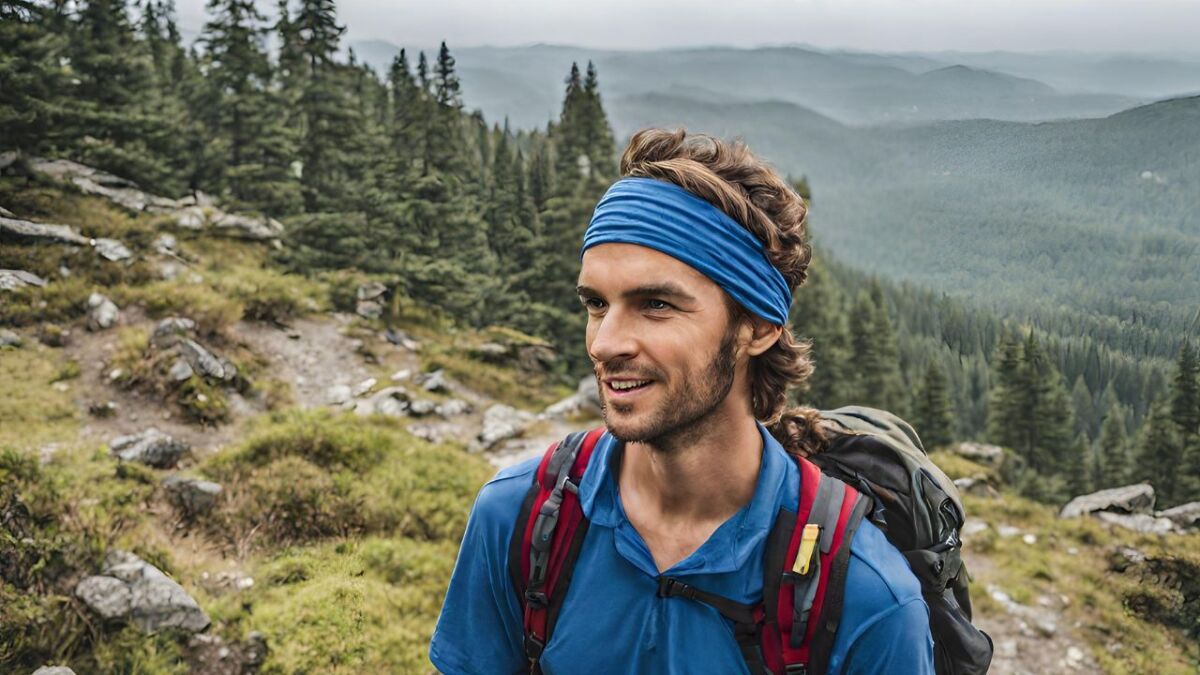
What to consider when choosing hiking clothing
The choice of the right hiking clothing is crucial to protect yourself from moisture and injuries and to enjoy the best possible comfort.
When planning a hike, it is therefore necessary to consider the various elements of hiking clothing and choose the right materials and properties.
Here are some important points that I have noticed in the past years:
Keep moisture away from the body
During hiking, your body produces moisture in the form of sweat. It is therefore essential to choose to hike clothing that effectively wicks away this moisture and keeps you dry.
Synthetic materials such as Polyester and Polyamide are particularly suitable for this, as they quickly transport moisture to the outside and dry quickly again.
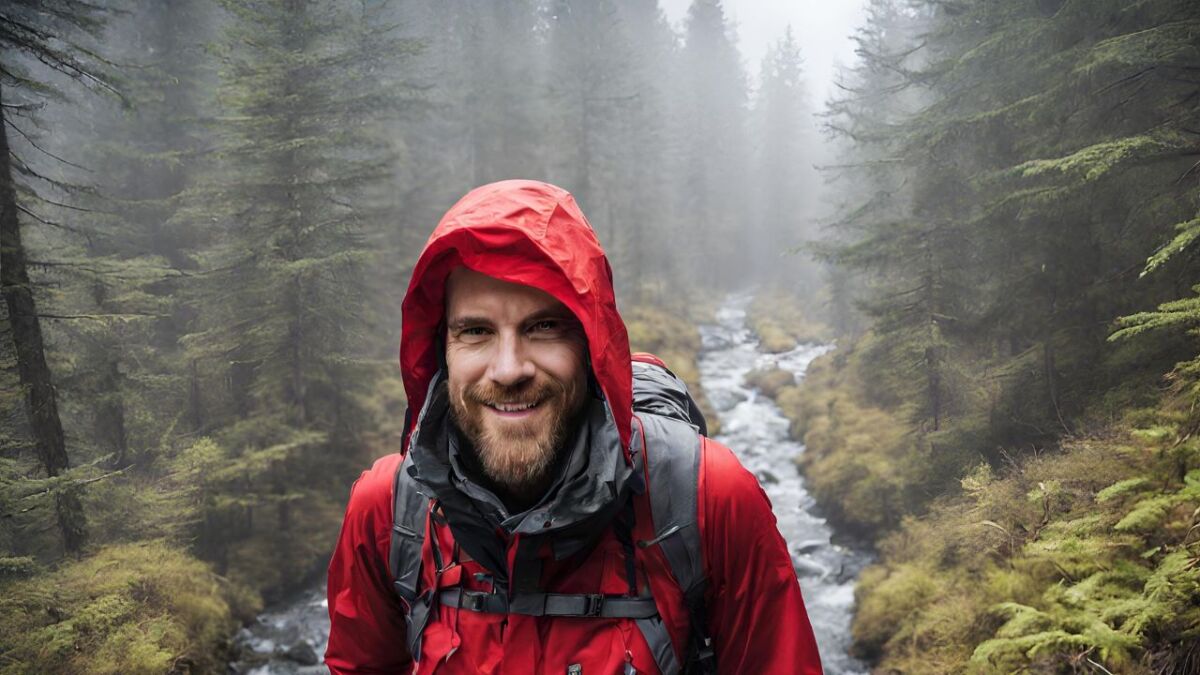
Protection for ankles and knees
The right hiking clothing should also have reinforcements on the ankles and knees to protect these sensitive areas from injuries and abrasion.
Especially when hiking in rough terrain or over rocks and rubble, you should pay attention to this tip.
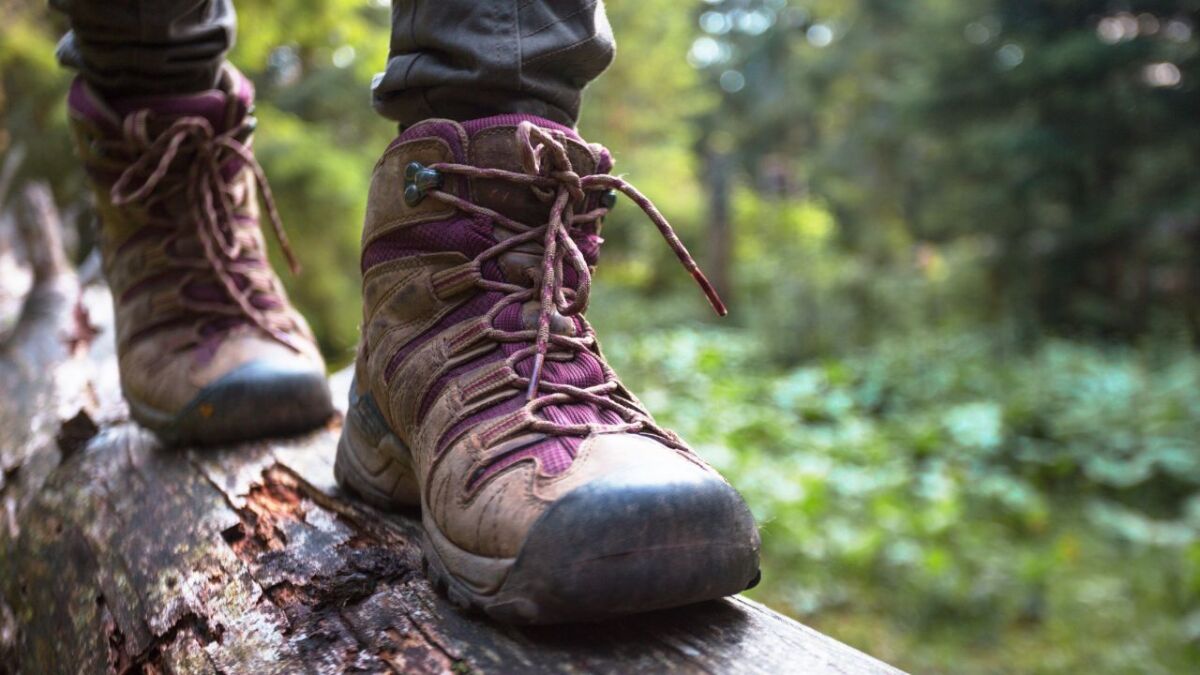
Shorts or long pants?
I enjoy hiking in shorts - especially when it's 30 degrees outside.
The fact is, however, it depends on the terrain and weather conditions.
I have often noticed on exhausting multi-day hikes that cotton hiking pants can smell unpleasant and chafe on the second day.
In warm weather and good conditions, I prefer wearing shorts, while in cool weather or in areas with high grass, bushes, or vines, long pants provide better protection.
My tip: There are hiking pants with detachable legs to adapt flexibly to changing conditions.
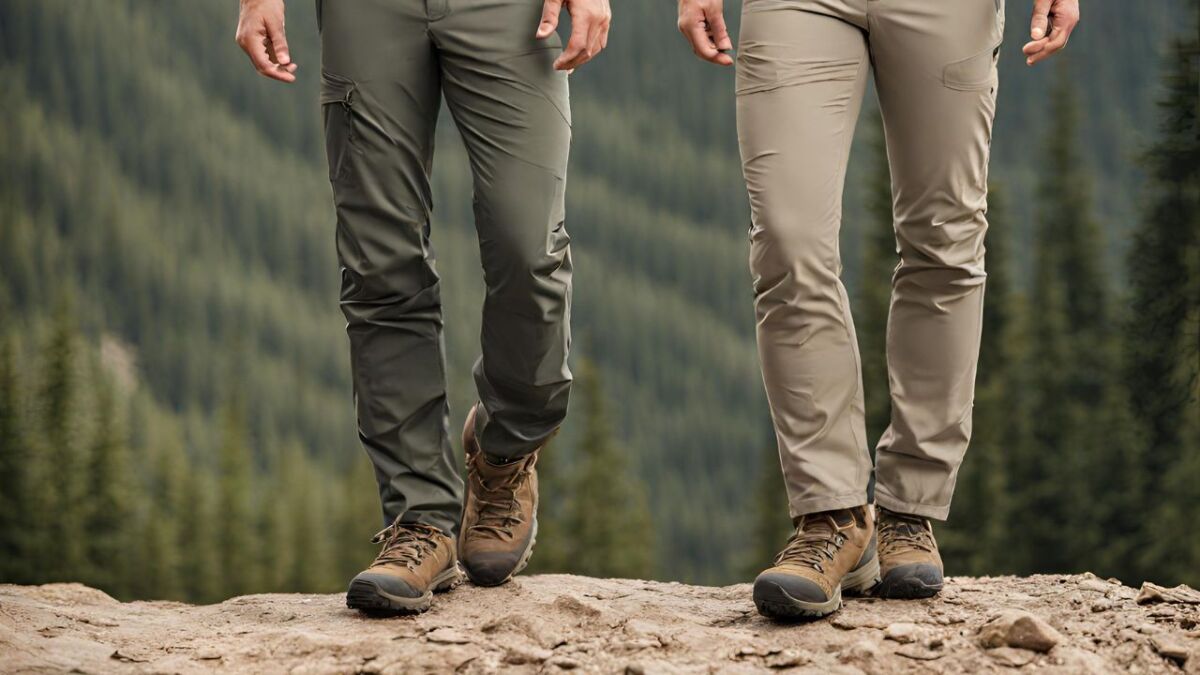
Hiking Clothing Table
| Garment | Recommended Material | Recommended Features |
|---|---|---|
| Base Layer | Synthetic fabrics or merino wool | Lightweight, breathable, quick-drying |
| Mid-Layer | Fleece jackets or pullovers | Insulating, warming |
| Hiking Jacket | Breathable, water-repellent materials | Equipped with many pockets, protection against wind and weather |
| Hiking Pants | Durable, water-repellent material | Waterproof, breathable, good freedom of movement |
| Hiking Shoes | Durable upper material, grippy sole | Good fit, ankle support, slip-resistant |
If you want to go shopping now, here's my recommendation.
Pay attention to:
- Quality
- Fit
- Functionality
Choosing high-quality materials and renowned brands is usually a good choice.
Maybe you also decide to go for sustainably produced hiking clothing that meets the demands of challenging hikes and is environmentally friendly at the same time.

A good hiking outfit for a successful hike
In addition to the right hiking clothing, the choice of the right equipment is essential for a successful hike.
The right equipment allows you to fully enjoy nature while also ensuring your safety.
Here are some important points to consider when choosing your hiking equipment:
Hiking backpack
A good hiking backpack is an essential piece of equipment for every hike.
It should be made of durable material and provide enough space to store all necessary items such as water bottle, snacks, rain jacket, and map.
Pay attention to hiking backpacks that have a ventilated back padding and adjustable straps - this ensures a comfortable fit and good weight distribution.
For example, I would never go hiking without a hip belt on a backpack. No matter how heavy it is or if it's just a day trip.
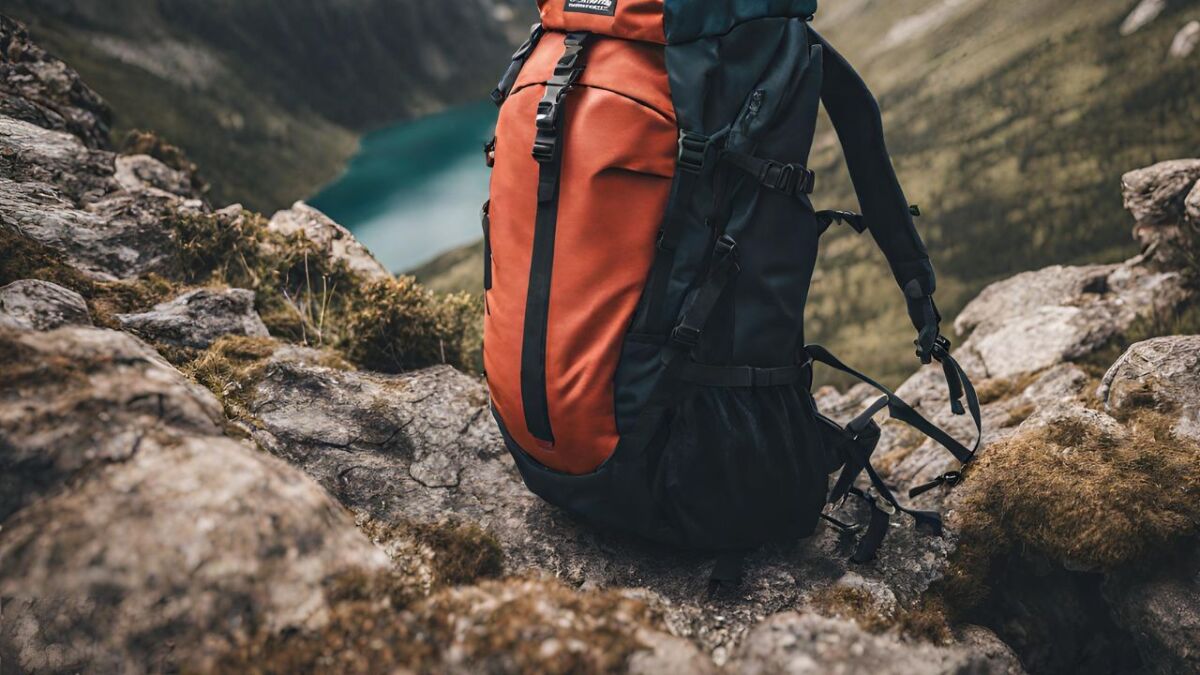
Hiking Shoes
Good hiking shoes are crucial for a pleasant hike. If you've been on the road for years like me, you'll believe me. Therefore, invest your money in the right place.
Make sure that the shoes have a good fit and are made of breathable, synthetic material.
In addition, they should have ankle-high reinforcement and a robust sole to protect your feet optimally and ensure good traction on different surfaces.
Pair your hiking shoes with the appropriate hiking socks to prevent blisters and pressure points.
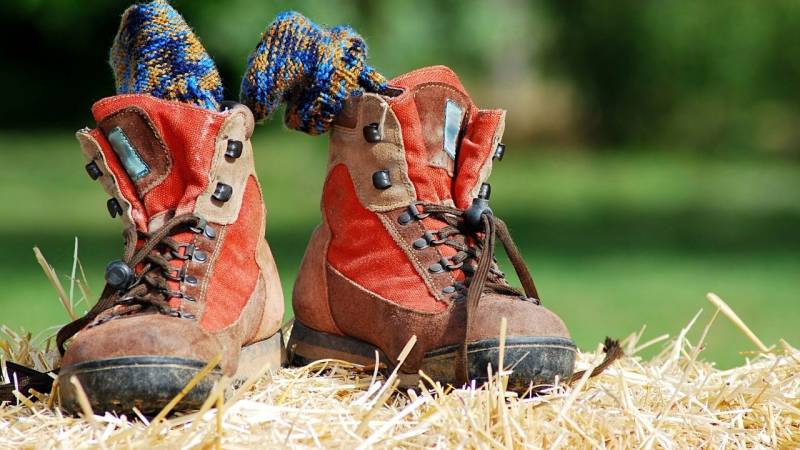
Additional important equipment
Aside from backpack and shoes, there are some other important equipment items that can make your hike more enjoyable and safer.
- Hydration System - You should bring at least 1 liter, preferably 2–3 liters of fluid. Use a hydration bladder in your backpack or a solid bottle.
- First Aid Kit - For minor injuries such as blisters, bruises, etc. I often put together my kit.
- Weather Protection - Rain jacket and pants, possibly a transitional jacket for cooler weather.
- Headgear - Protection against sun and precipitation. In summer, a lightweight cap, in spring/autumn, a hiking hat. Read more here.
- Hiking Poles - Relieve stress on your joints, especially during descents.
- Provisions - Pack enough food and snacks for the journey.
- Sun Protection - Sunscreen, possibly sunglasses.
- Navigation - It doesn't necessarily have to be a map with a compass, often a hiking app on your smartphone is sufficient (but make sure you have reception).
- Emergency Equipment - Pocket knife, headlamp, lighter, emergency blanket. Read more here.
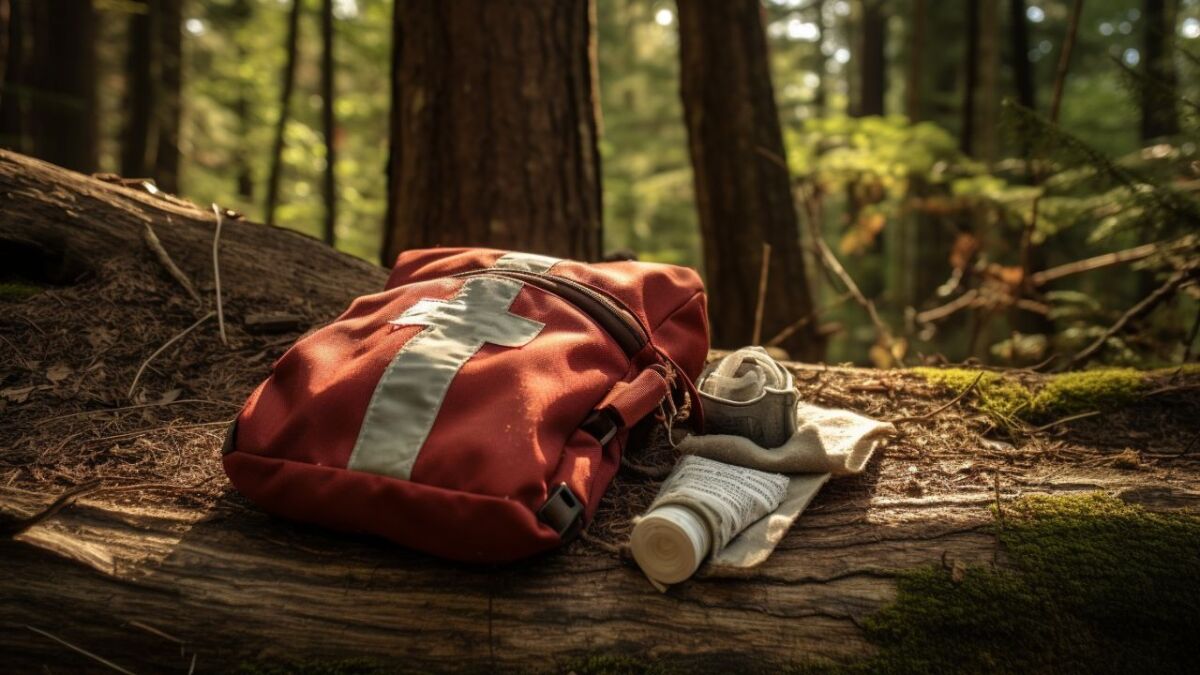
Optional, depending on the landscape and type of hike:
- Headlamp - For tours until dusk or in poor visibility.
- Binoculars - To observe flora and fauna.
- Seat cushion - For comfortable resting on the ground.
- Towel - For refreshing at streams or lakes. Microfiber dries quickly.
- Trash bag - Empty bags for your waste are part of environmental protection.
- Spikes - Grips for shoe soles on icy surfaces.
Make sure that your equipment is lightweight and fits perfectly in your backpack so that you are not unnecessarily burdened on the go.
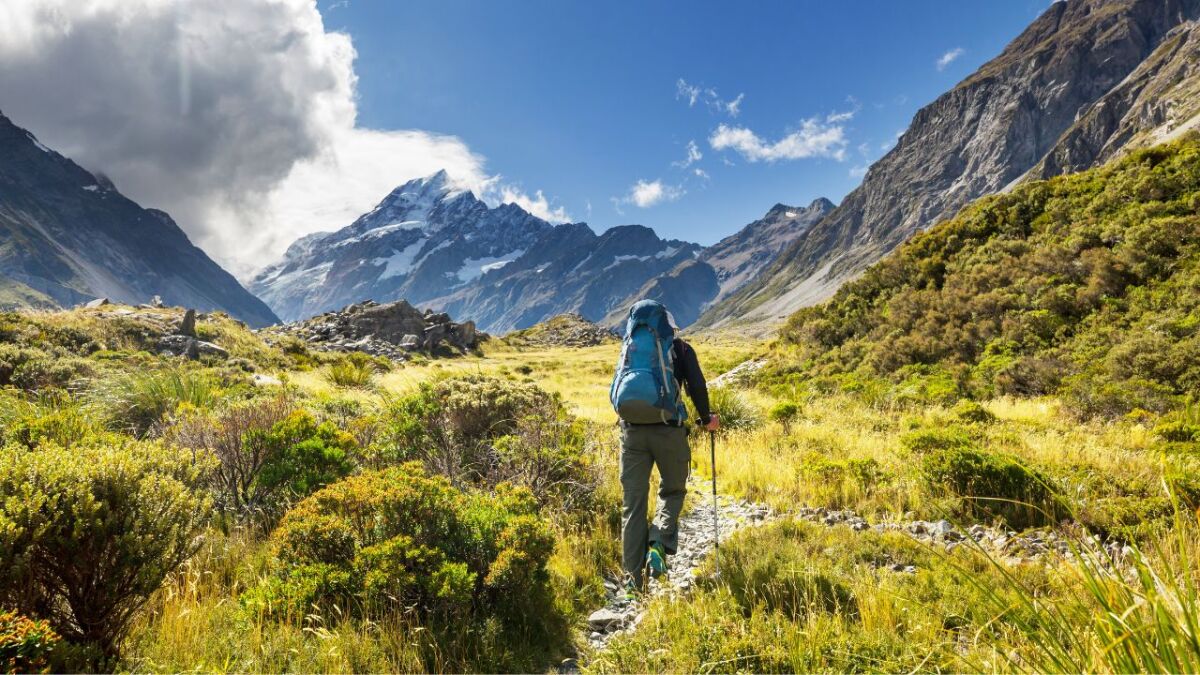
Questions and Answers about Hiking Clothing
What clothing should you wear when hiking?
When hiking, you should wear clothing that is lightweight, breathable, and functional. I recommend applying the layering principle and wearing multiple thin layers to adapt to the weather.
Which materials are suitable for hiking clothing?
Suitable materials for hiking clothing are merino wool, synthetic fabrics, and fleece. Cotton should be avoided as it absorbs moisture and takes a long time to dry.
How to choose the right hiking shoes?
The right hiking shoes should have a good fit, be water-resistant and durable. It is also important to pay attention to the choice of the right hiking socks.
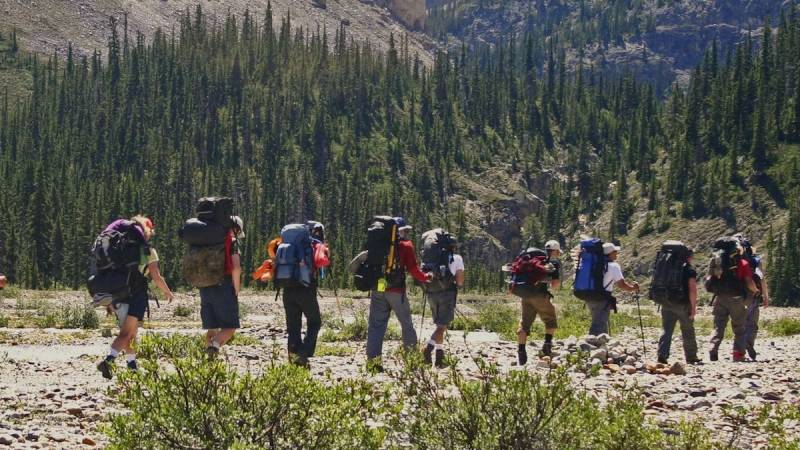
What accessories are important for hiking?
Important accessories for hiking are sunglasses, hat, gloves, hydration system, first aid kit, and hiking poles. They provide additional protection from the sun, cold, and support the hike.
Which brand offers sustainable hiking clothing?
Here are some brands that offer sustainable and environmentally friendly hiking clothing:
- Vaude - German manufacturer, many products made from recycled materials, Bluesign certified. Offers jackets, pants, shirts, etc.
- Patagonia - US outdoor brand with a focus on sustainability. Uses recycled and fair trade materials. Wide range of functional clothing.
- Jack Wolfskin - Uses partially recycled materials and down-free products. Has an eco-line in its range.
- Marmot - US brand, uses environmentally friendly technologies such as PFC-free impregnation. Also produces organic cotton clothing.
- Houdini - Swedish outdoor brand. Avoids PVC and PFC, uses Bluesign materials. Focus on durable products.
- Bergans of Norway - Norwegian manufacturer with a focus on sustainability. Recycled materials and PFC-free products.
- Nikwax - British brand for sustainable functional sprays, impregnation, etc.
- Finisterre - Production in Europe with Bluesign certified materials. Recycled polyester and organic cotton.
- Fjällräven: Uses partially recycled polyester and has developed a food-grade safe impregnation.
- Haglöfs: The Swedish brand relies on the Traceability Standard for socially and environmentally responsible production. The products are durable and repairable.
- Icebreaker: The New Zealand brand produces merino hiking clothing according to the ZQ standard for animal welfare and sustainability.

Why is the right hiking clothing so important?
The right hiking clothing protects you from moisture, maximizes your comfort, and allows you to fully enjoy nature. It supports the regulation of body temperature and ensures a pleasant hiking experience.
How should the different layers of hiking clothing work together?
The different layers of hiking clothing should work together perfectly to maximize comfort and functionality while hiking.
The base layer should be worn directly against the skin, followed by the mid-layer for insulation, and a breathable and water-repellent hiking jacket.
How do I get my clothes dry again?
If your functional clothing has gotten wet on a multi-day tour, it needs to dry as quickly as possible to fulfill its purpose.
Here are some practical tips on how to best dry wet hiking clothing:
- Do not pack wet clothes in an airtight stuff sack, but transport them in a ventilated place in your backpack.
- Take the opportunity during breaks to spread out wet items.
- Preferably in the sun or wind.
- Inquire at hostels if you are allowed to hang up wet clothes - sometimes there are dedicated drying rooms.
- Switch to warmer base layers so that you don't have to wear the outer wet clothing during the day.
- Bring thin TPU dry bags to store wet clothes and separate them from the rest.
- After the tour, it is best to quickly wash wet functional clothing and let it dry completely before using it again.
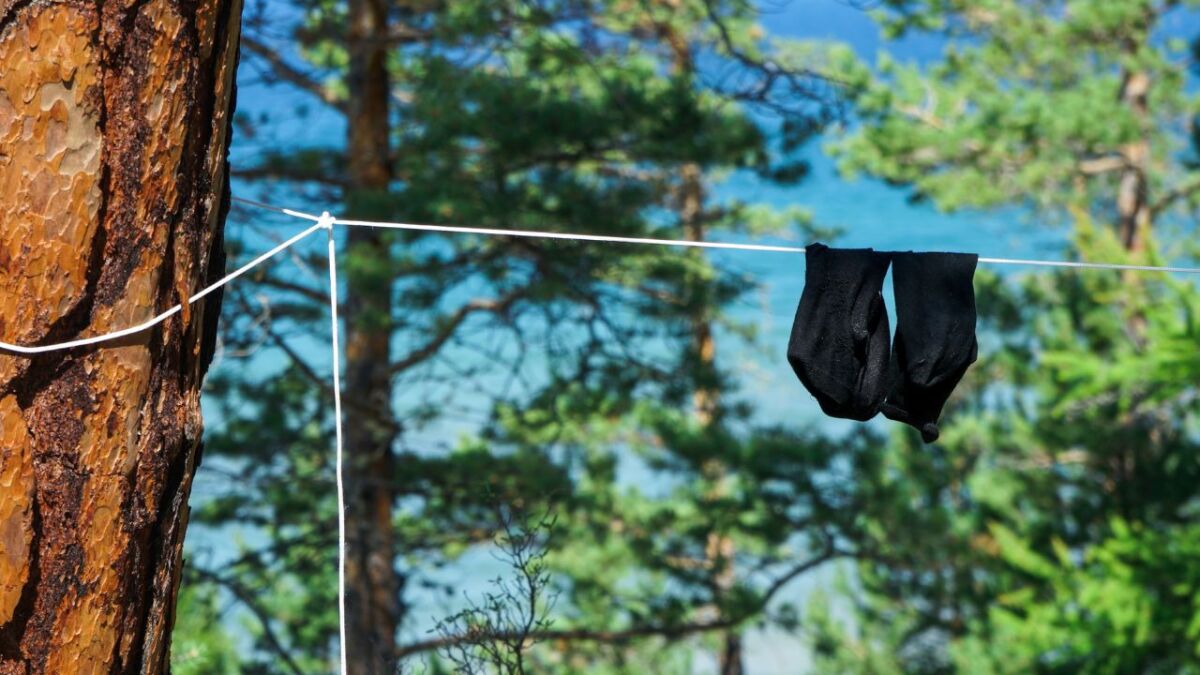
Clothing for Hiking: Dress Appropriately and Follow the Basics
A successful hike in any weather requires the right clothing and equipment to ensure comfort, protection, and enjoyment of nature.
The choice of hiking clothing can have a massive impact on your hike, so you should choose it carefully.
The different layers of hiking clothing should work together perfectly.
Avoid wearing cotton clothing for hiking, as it absorbs moisture and takes a long time to dry.
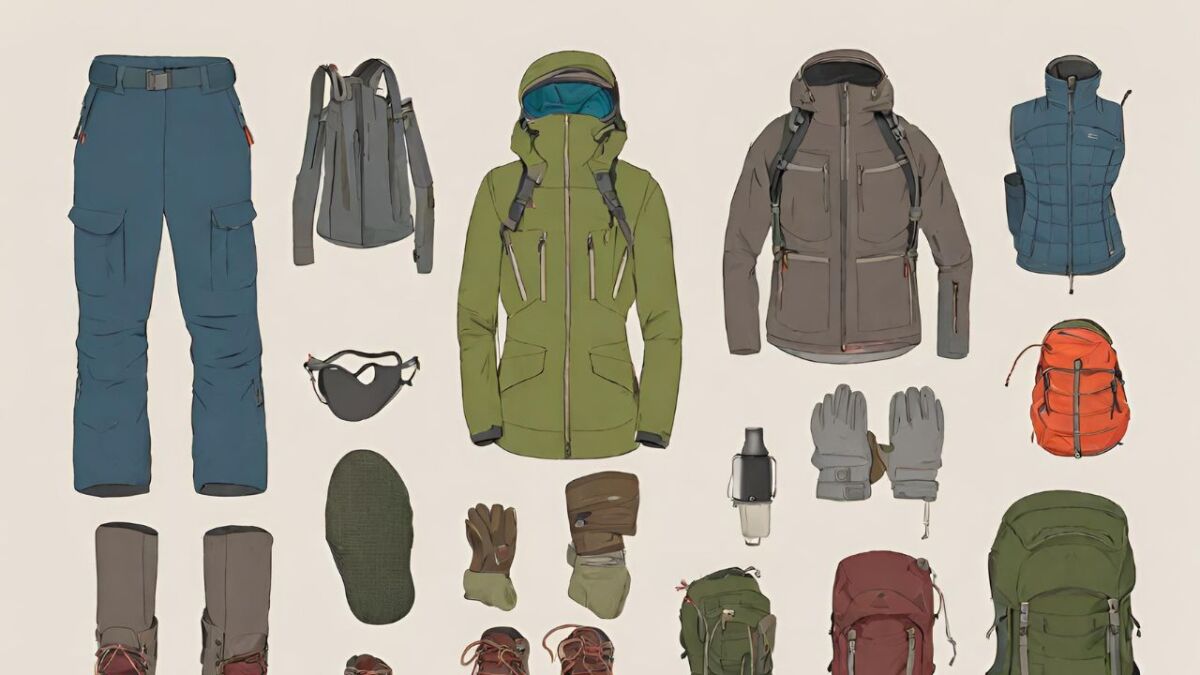
The base layer is worn directly on the skin and should be made of lightweight, breathable, and quick-drying materials such as merino wool or synthetic fabrics.
The mid-layer serves as insulation and can consist of fleece jackets or pullovers. Hiking jackets should be breathable, water-repellent, and equipped with plenty of pockets.
Moreover, a waterproof and breathable hiking pants is recommended. In addition, you should pay attention to a good fit of the hiking shoes and hiking socks.
Other important clothing items for hikes are sunglasses, hat, and gloves.
And remember the onion principle: multiple thin layers are worn to adapt to the weather.
A successful hike in any weather requires the right clothing and equipment to ensure comfort, protection, and enjoyment of nature.
With the right materials, such as durable synthetic fibers and elastic fabrics, you can fully enjoy the beauty of nature.
Read on to learn more about hiking and benefit from my experiences:
- The 30+ best items for a hike - what you should pack
- What food to take for hiking? - 5 delicious recipes for backpacking
- How do I prevent blisters while hiking, and how do I treat them successfully?


Author of the guide
Martin Gebhardt
Hey, I'm Martin. On my blog, you will learn the basics and numerous details about living in the wild. I think survival, bushcraft and the good life in nature are the keys to happiness. Find me here on Instagram or on YouTube. You can find more about my mission on the About Me page.
Was this guide helpful?
16 people found this guide helpful.
5.00 out of 5 points (16 Ratings)
Comments (0)
This post may contain affiliate links. So if you click on the links and make a purchase, I will receive a small commission at no additional cost to you. Click here, to learn more about it.


